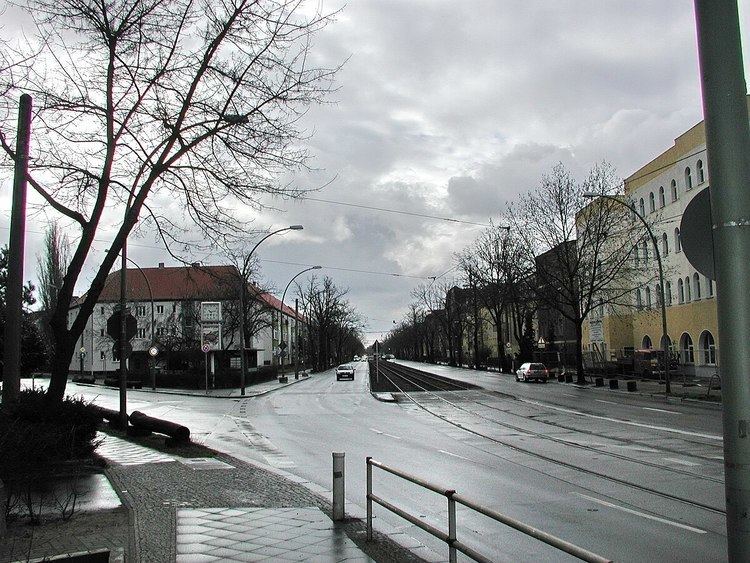Elevation 52 m (171 ft) Area 6.6 km² | State Berlin Founded 1895 Time zone CET/CEST (UTC+1/+2) Local time Friday 4:48 PM | |
 | ||
Weather 8°C, Wind NW at 16 km/h, 67% Humidity Colleges and Universities HTW Berlin - University of Applied Sciences, Catholic University of Applied Social Sciences Berlin | ||
Karlshorst (literally meaning Karl's nest in German) is a locality in the borough of Lichtenberg in Berlin. Located there are a harness racing track and the Hochschule für Technik und Wirtschaft Berlin (HTW), the largest University of Applied Sciences in Berlin, and the German-Russian Museum Berlin-Karlshorst.
Contents
- Map of Karlshorst 10318 Berlin Germany
- History
- Transportation
- Born in Karlshorst
- Dwelt in Karlshorst
- References
Map of Karlshorst, 10318 Berlin, Germany
History
Established in 1895 as the Carlshorst mansion's colony, Karlshorst from 1901 had access to the railway line from Berlin to Breslau (today Wrocław, Poland) and developed to a quite affluent residential area, sometimes referred to as "Dahlem of the East". The locality encompasses the Waldsiedlung, a garden city laid out between 1919 and 1921 according to plans by Peter Behrens.
In April 1945, as the Red Army approached the Reich's capital, Marshal Georgy Zhukov, commander of the 1st Belorussian Front, established his headquarters at a former Wehrmacht officer's mess hall in Karlshorst, where on May 8, the unconditional surrender of the German forces was presented to Zhukov by Colonel-General Hans-Jürgen Stumpff as the representative of the Luftwaffe, Field Marshal Wilhelm Keitel as Chief of Staff of OKW, and Admiral Hans-Georg von Friedeburg as Commander-in-Chief of the Kriegsmarine.
From 1945 to 1949 the building complex served as the headquarters of the Soviet Military Administration in Germany. After the establishment of the German Democratic Republic it hosted the 6th Independent Motorized Rifle Brigade, the Soviets' "Berlin Brigade," until the last Russian soldiers left Karlshorst in 1994. The former headquarters has been made the home of the German-Russian Museum Berlin-Karlshorst (Deutsch-Russisches Museum Berlin-Karlshorst) [1], formerly called the Capitulation Museum.
Transportation
Karlshorst has access to the Berlin S-Bahn network at Berlin-Karlshorst railway station, which is also served by RegionalExpress trains of the Deutsche Bahn.
Born in Karlshorst
Dwelt in Karlshorst
The engineer Georg Knorr (1859-1911), is buried at the Karlshorst cemetery.
